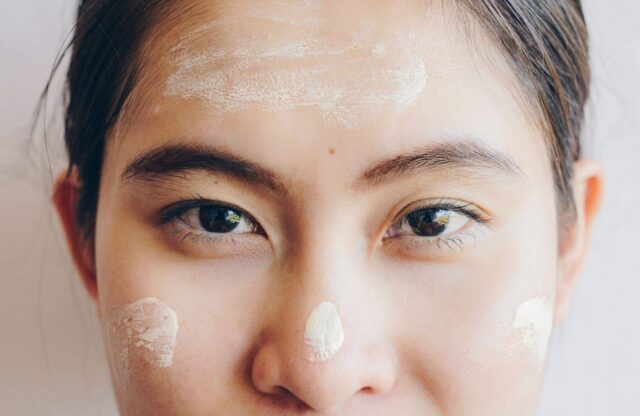
When it comes to achieving radiant and healthy skin, knowledge is power. Understanding your skin’s unique needs is the first step towards an effective skincare routine.
A comprehensive dermis analysis can provide valuable insights into your skin’s condition, helping you make informed choices about the products and treatments that will work best for you.
In this guide, we’ll take you through each step of a thorough dermis analysis, from gathering the necessary tools to assessing key factors like dermis type, texture, tone, and more. Let’s delve into the world of dermatology assessment without further ado.
Gathering the Essential Tools

Before embarking on your journey to analyze and understand your dermis better, it’s crucial to equip yourself with the necessary tools.
A well-illuminated setting, preferably with natural light, or a high-quality mirror that provides adequate lighting is indispensable. Appropriate illumination is vital for a precise assessment of your skin’s condition.
Additionally, having a notebook or a digital note-taking app at your disposal can prove invaluable. These tools enable you to document your observations and monitor changes over time effectively.
Commencing with Cleansing
Initiating the assessment process necessitates starting with a clean slate. Ensuring your face is free from any external influences is paramount for an accurate analysis. Initiate this phase by employing a mild cleanser to eliminate makeup residues, pollutants, and impurities.
The cleansing ritual unveils your true complexion, free from any extraneous factors that could mask the results.
After cleansing, it’s advisable to gently pat your face dry using a clean towel. Vigorous rubbing should be avoided as it may lead to dermis irritation. Also, it would be wise to check your dermis with a skin analyser before you start with cleaning.
Discerning Your Skin Type
The identification of your skin type serves as a foundational step in any dermatology regimen.
Four primary dermis types prevail: those that are prone to excessive oil production, others that tend to experience a sense of tightness or flakiness, a combination of oily and dry characteristics in different areas, and lastly, a skin type that maintains a harmonious equilibrium.
To unveil your unique dermis type, embark on a day-long observation of how your skin perceives various environmental factors. Oily tendencies manifest as an overproduction of natural oils, while dry characteristics result in a sensation of tautness or flakiness.
Combination dermis exhibits both oily and dry attributes in distinct zones, whereas normal dermis remains consistently balanced and comfortable. Armed with the knowledge of your dermis type, you can make well-informed choices when selecting products that cater to your specific requirements.
Assessing Skin Texture

Skin texture plays a crucial role in the appearance and feel of your skin. To check for texture issues, run your fingers gently over your face.
Smooth, even dermis is a sign of good texture, while roughness or unevenness may indicate problems. Texture matters because it affects how makeup and skincare products apply and how your dermis looks and feels.
It’s a key aspect of dermis health that should not be overlooked.
Evaluating Skin Tone
Understanding your skin’s undertone—whether it’s cool, warm, or neutral—can make a significant difference in your makeup and dermatology choices. To determine your undertone, look at the veins on the underside of your wrist.
Greenish veins suggest a warm undertone, bluish veins indicate a cool undertone, and a mix of both may point to a neutral undertone.
Knowing your undertone helps you select foundation shades, lipstick colors, and clothing that complement your dermis tone.
Inspecting Blemishes and Acne
Blemishes and acne can affect anyone, regardless of age or skin type. Identifying and categorizing them is essential for effective treatment. Blemishes can include blackheads, whiteheads, pimples, and cysts.
Understanding the type of blemish you have can guide you in choosing the right skincare products to address them.
Factors like hormones, diet, and dermatology routines can contribute to breakouts, so keeping track of your habits can help you manage acne more effectively.
Examining Fine Lines and Wrinkles

Aging is a natural process, and its effects on the dermis can become more visible over time. To spot signs of aging, look for fine lines and wrinkles, especially around areas like the eyes, mouth, and forehead.
While aging is inevitable, there are preventive measures and treatments available to minimize its impact. Sunscreen, moisturizers, and products containing retinol are some options to consider for maintaining youthful-looking skin.
Checking for Sensitivity
Skin sensitivity can lead to redness, irritation, and discomfort. To assess your skin’s sensitivity, pay attention to how it reacts to various skincare products and environmental factors.
Common triggers for sensitive dermis include harsh cleansers, excessive sun exposure, and certain ingredients in dermatology products.
If you have sensitive dermis, opt for gentle, fragrance-free products and incorporate soothing ingredients like aloe vera or chamomile into your routine.
Assessing Sun Damage
Sun protection is a cornerstone of healthy skincare. To recognize signs of sun damage, look for sunspots, also known as age spots or liver spots. These are small, dark patches that can appear on areas of the dermis exposed to the sun.
Sunspots are a result of cumulative sun exposure over the years and can be prevented or minimized with proper sun protection. Remember to use sunscreen daily and wear protective clothing when spending time outdoors.
Evaluating Hydration Levels
Skin hydration is essential for maintaining a healthy complexion. Dehydrated skin may feel tight, flaky, or rough. To determine your skin’s hydration levels, assess how it feels throughout the day.
Factors like climate, diet, and dermatology products can affect hydration. Drinking enough water and using moisturizers with hydrating ingredients can help maintain dermis moisture.
Conclusion

A comprehensive skin analysis is a valuable tool for achieving and maintaining healthy skin.
By understanding your dermis type, texture, tone, and addressing specific concerns like blemishes, aging signs, sensitivity, sun damage, and hydration, you can tailor your skincare routine to your unique needs.
Regular assessments and adjustments to your routine will help you achieve the radiant and healthy dermis you desire.
Remember that consistency is key, and don’t hesitate to seek professional advice for personalized dermatology recommendations. Your dermis deserves the best care you can provide, and with these tips, you’re well on your way to a glowing complexion.









